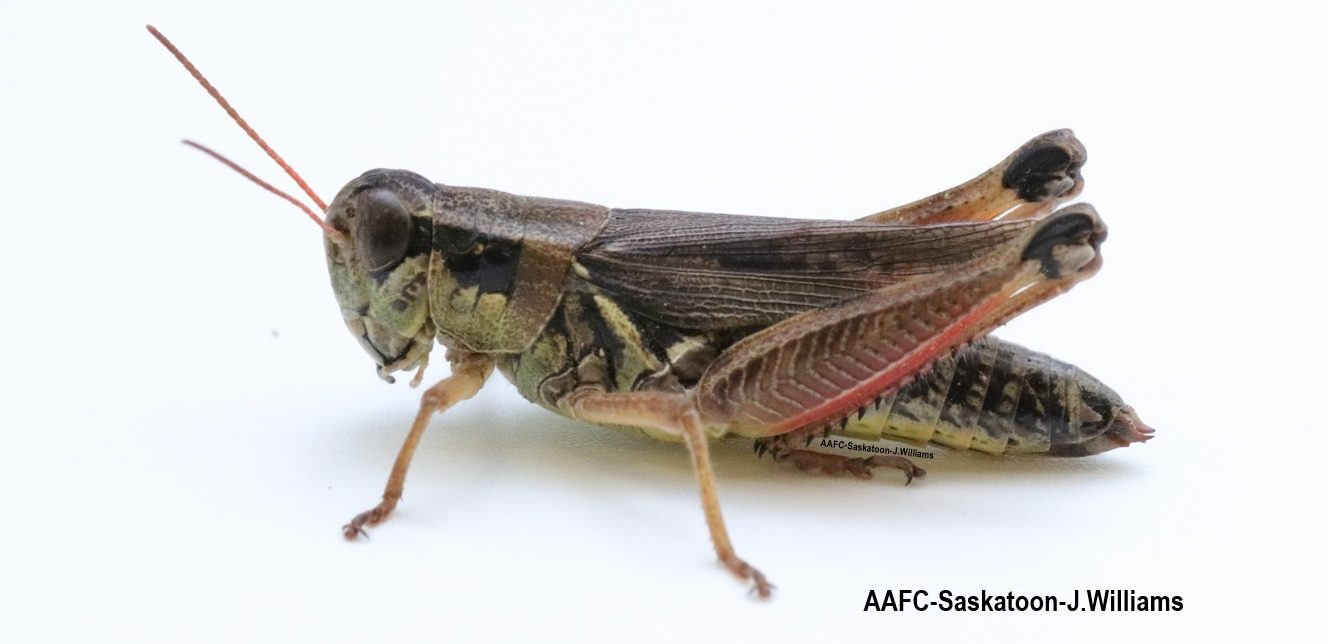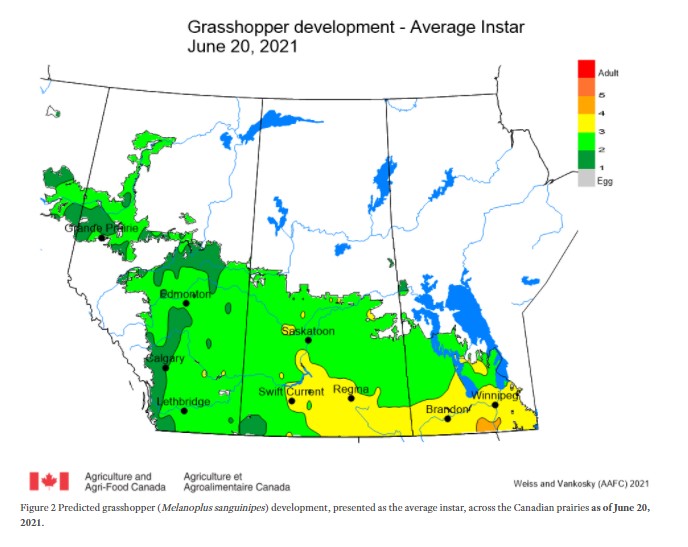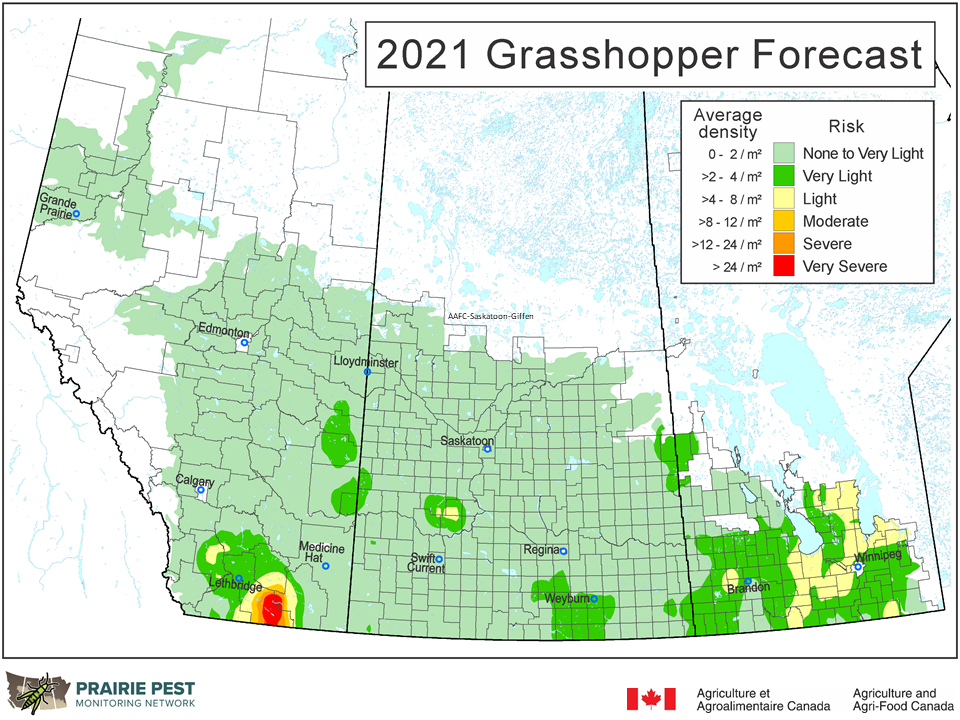AB Direct - Steers
Rail: ---
AB Direct - Heifers
Rail: ---
US Trade- Steers
Rail: 290.00 (IA)
US Trade - Heifers
Rail: 290.00 (IA)
Canadian Dollar
0.02

Producers urged to start scouting for grasshoppers
You’ve likely already noticed grasshopper nymphs at your feet, but are you keeping a close eye on your fields and pastures? If not, start packing your scouting essentials.
“This is the week. If you haven’t scouted for grasshoppers yet, please absolutely do,” says Jennifer Otani, pest management specialist with Agriculture and Agri-Food Canada.
According to models available through the Prairie Pest Monitoring Network, grasshoppers are likely nearing the second and third instar stages throughout much of Alberta. And, warns Otani, development is tied to external temperature. That means, if we do see some heat, grasshoppers will grow (and eat) quickly.
to talk about grasshopper populations in Alberta, and the impending heat wave.
Monitoring predictions
In addition to monitoring their fields, Otani hopes producers are also staying informed through weekly updates from the Prairie Pest Monitoring Network. The predictive models use environmental conditions to predict grasshopper development and staging across the prairies.

head to the Prairie Pest Monitoring Network’s Week 8 Update.
“This is really important because it helps growers actually stay on top of what stages are potentially out in their fields, and what they should be scouting for. And with grasshoppers, we’re really anxious to have growers scout earlier.”

Scouting tips and tactics
The first thing Otani does when scouting is walk the ditch that borders the field. If it’s hopping, it’s time to grab a sweep net for a better idea of what’s there. And if there are grasshoppers, it’s time to get serious.
Scouting grasshoppers requires taking counts per square metre to compare against economic thresholds. Otani suggests doing this by walking through the crop and looking ahead a few metres to count those jumping in front of you.
Economic thresholds for grasshopper in Alberta
Doing these checks early (i.e. now i.e. before they’re hitting your windshield) makes for easier counting. It can also make for easier management, when necessary.
When it comes to spraying
“Sometimes you can actually spray edges or do spot-spraying, but with that incredible heat that we’re going to have over these next seven to 10 days, that might be a tough situation to manage, because we’re expecting grasshoppers are going to be looking for lush, green material.”
Best management practices for grasshoppers in Alberta
For some areas of the province, there’s little “lush, green material.” And that’s something to consider too, when deciding on management options.
“The big thing that growers are going to want to be weighing here is the condition of their field, and do they have the plant density? Do they have good growing conditions with adequate moisture that’s going to help these plants withstand this incredible heat? I guess the answer there is, if you don’t have all of those good things, then the grasshopper densities become really important.”
If growers are in areas of high drought/heat stress, Otani suggests scouting regularly — even on a daily basis.
While grasshoppers are generally active throughout the day, Otani says producers in regions of extreme heat may consider scouting in the morning or evening.
Even grasshoppers may be seeking shade when temperatures hit the mid-30s.
Leave a Comment
Add abpdaily.com to your home screen
Tap the menu button next to the address bar or at the bottom of your browser.
Select ‘Install’ or ‘Add to Homescreen’ to stay connected.



Share this article on